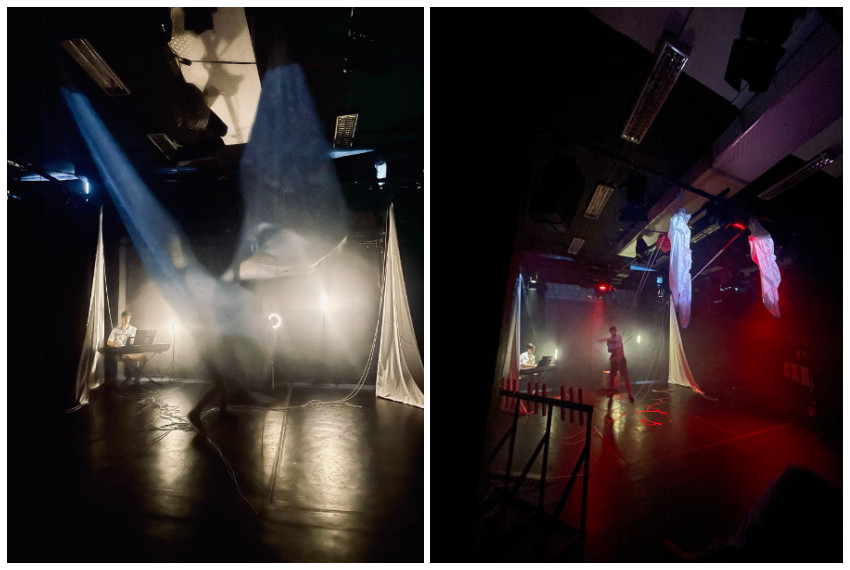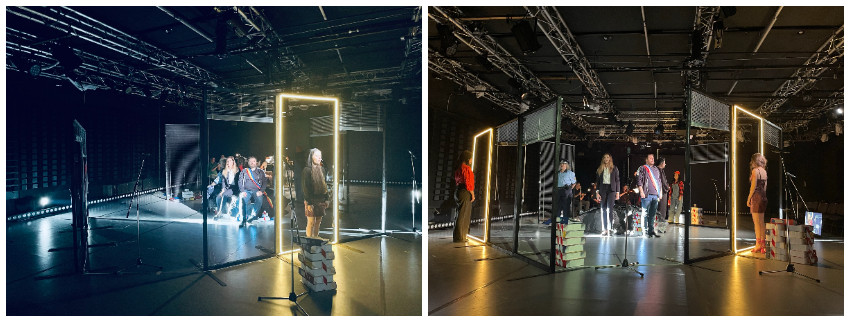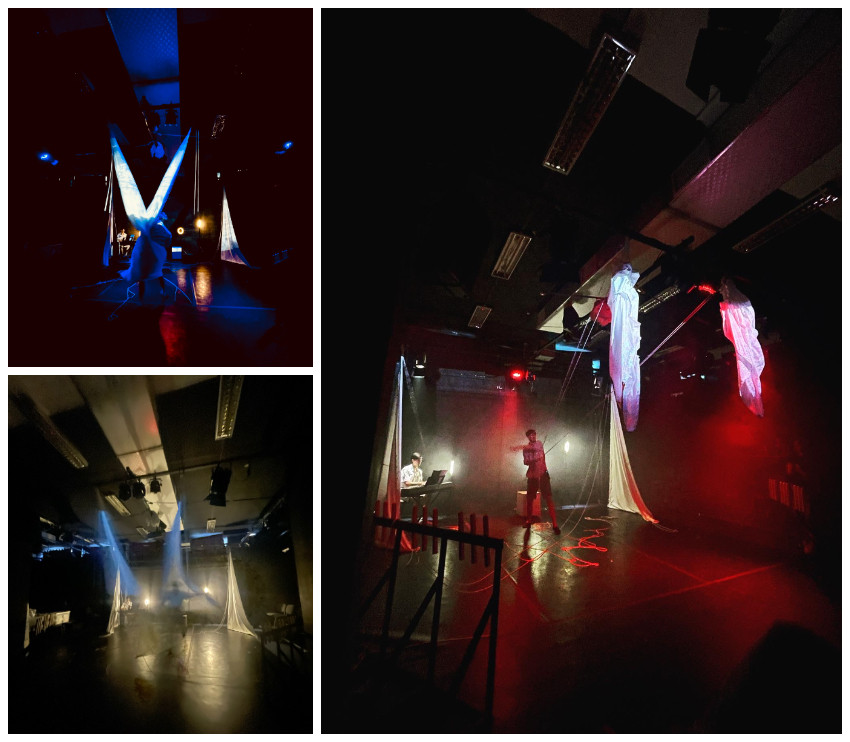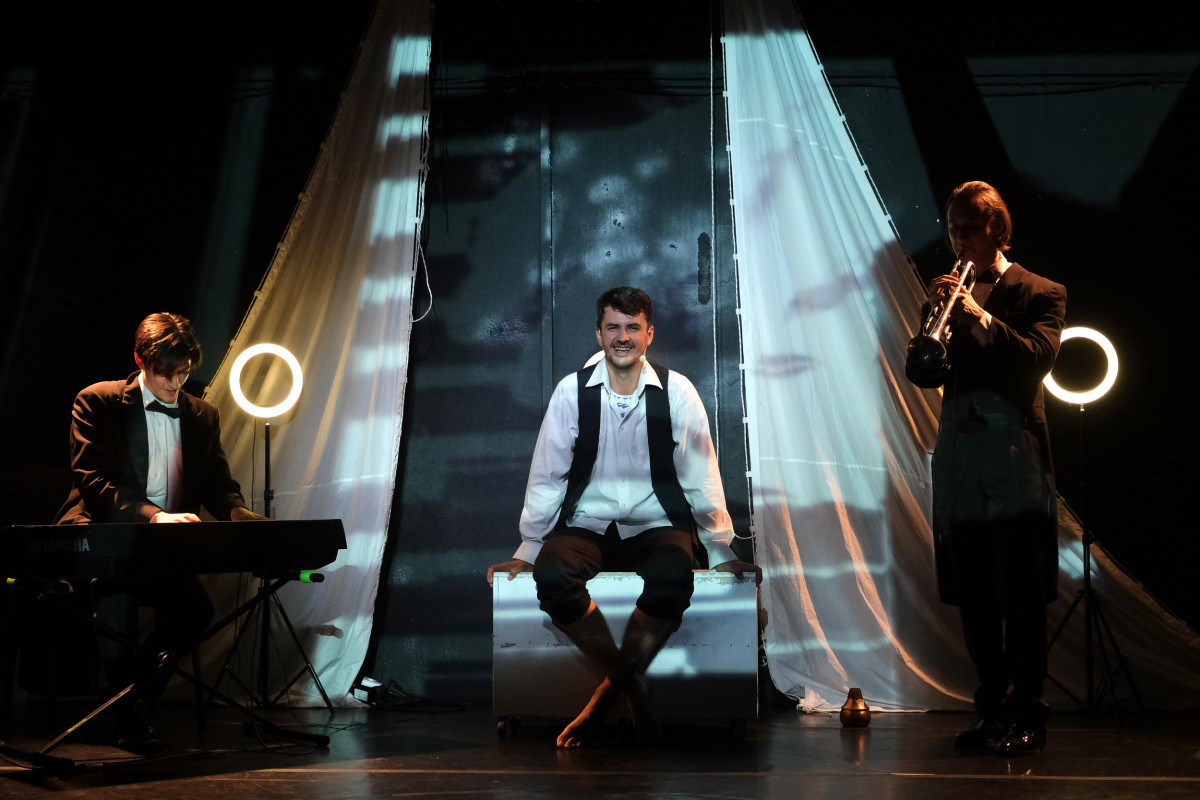The scenography is a character of a theater show, not just a decor, he says Alexandra Lupeswho begins his creative process with the same stage: the panic of not having a clear idea. Everything takes shape, however, with the thorough analysis of the text and gets lost in sketches on paper, on the tablet, until he comes up with the first ideas for the director.
Alexandra graduated from the University of Architecture in Bucharest, and later turned to exhibition design and scenography for theatre, opera, symphony concerts and commercial events. With her latest theater project, the show Novecento, directed by Daniel Simion, Alexandra participated in the Scenography Biennial of the National Theater Festival.
“I am attracted by the idea of a syncretic show, which combines theater, music, dance. I was inspired by Cărtărescu’s short stories and I would like to work in a team where we would make a musical drama based on one of the short stories from the Nostalgia volume” .
We talk to Alexandra Lupes about inspiration, creation and the performance of the Apropo, Novecento Theatre.
From the biography
I’m a get-beget from Bucharest, and I spent my childhood close to the stage – as we all know it, or the virtual one, from the TVR studios. Grandmother, Sofia Şincan, worked in Radio, being one of the fathers of radio theater. Of course, as a child, for these shows, I made the best sets so far, because they remained only in my imagination. My grandfather, Dionisie Sincan, ran the television after 1990, being at the same time the editor of some important shows, and both of them created a cultural environment for me that was full of theater and discussions on this topic. I was lucky with my mother, who not only let me paint the walls of the house as a child with the first scenographies dedicated to my room, but also encouraged me to follow this path, she also worked in TVR.
I belong to that category of scenographers who come from architecture and not from UNATC, which means that almost instantly I also have a functional vision of the set, not just an imaginative, playful one.
Mentors in training
I can’t say I have a mentor, but I admire the work of many set designers and architects alike. Architects create the scenography of the cities, and scenographers, the architecture of the scenes.
Among architects, I admire Zaha Hadid, for her pioneering and strength in architecture. I admire Frank Gehry, in whose building I lived for a few days in Prague (Dancing House), his buildings becoming characters of the cities in which they are located. I admire Shigeru Ban for his atypical solutions of a disarming simplicity.
Among set designers, I like Michael Levine, whose Madama Butterfly I saw at the MET in New York, I admire Robert Wilson, who has the ability to be a complete artist. Among the Romanian scenographers, I appreciate Dragoș Buhagiar, because he manages to generate a biosphere of the show, and Adrian Damian, with whom I had the pleasure of collaborating, for the fusion between classical and technological.
The first scenography made
Leaving aside the scenographies of my childhood, which accompanied me for many years, I assume as my first scenographies the models of the projects from the faculty of architecture. I attached an imagined dramaturgy to each individual project, without which the project could not come together. I think I was in the “Gehry era”, where every result of my work had to be a character.
I debuted at Teatrul Apropo, with the project “Beyond the Mirror”, inspired by the text of Petru Creția, directed by Radu Popescu. The concept was a versatile one, with the setting also playing a functional role – two simple elements reconfigured the scene and made use of the physical phenomenon of light refraction. The concept was that of a mirror that reflects multiple realities. Basically, we all do this every day, when, before we leave the house, we observe ourselves in front of the mirror, arranging ourselves in the most advantageous position, therefore, creating the most favorable reality.
The peculiarities of your creative style
Right now, I’m convinced that simplicity represents me, but as I said above, this is probably just a face of me that I’ve discovered so far. I hope to continue to be an artist who does not get stuck in solutions, but always explores new paths, depending on the text and the team I work with.
Sometimes a solution can represent medium-term public success, but this success is not always equivalent to professional satisfaction, which is why I seek to have the energy to constantly discover new perspectives.
I believe in the collaboration of the public in the final result of the stage act. I hope my sets leave the stage discourse open to help the audience imagine stories that represent each individual. I’d rather post questions and not give answers.
I am looking for the essentialization of the means and the use of scenic elements as a symbol. I don’t appreciate pleonastic scenographies, which bring your knife on stage when the actor says the word “knife”. From the theater, you have to leave with questions, only from the TV you have the feeling that you are getting answers.
What influences you in creation
The first influence is given by the personal and professional course so far. As books in books are written, the design of a scene is a sum of the scenes we have seen so far.
The discussions with the director help me and especially the story inspires me, and not always directly, but sometimes as I understand it. For me, the set is not just a topographical context of the stage, but a character that communicates with the audience and interacts with the actors.
I am inspired by discussions with other artists, from complementary arts, one of them being Cristian, my husband, who is a conductor, for whom any musical structure can either represent an image, or even a short dramaturgy. I use the other arts for inspiration in the sets I make. For example, I had to make a scenography for a short contemporary opera whose subject was a current drama, widely discussed on Romanian TV news. I was inspired by a lot of things, less so the news, because I don’t have a TV.
The scenographer-director relationship
It’s hard to give a single answer, every collaboration and every team is different, but I get along best with those who leave an open perspective.
The creative process
It all starts with the panic of not having an idea. You confidently go on the road in the first stage, that of reading the text, and after you finish, you realize that not a single wheel is moving. Stress intervenes, adrenaline accumulates and thus, the first ideas appear, then the review and analysis of the text, testing the idea in context. You cannot have a first meeting with the director being unprepared. An inspired director can bring a lot of ideas to the stage designer.
We all know that there are also directors who provide scenographic solutions, but I prefer those who give me the freedom to have my own vision on the materialization of ideas.
I love and it inspires me to lose myself in making pencil sketches that no one else understands. The first ideas seem rocky, but as I progress in the work, they jump from the paper to the tablet and thus the first proposals for the director appear. From here on, it is easy to imagine that an artistic negotiation follows.
For me, the scenography is a character of the show, it’s not just scenery. If it were just scenery, it would be easy for us to make the scenography for Romeo and Juliet projecting the Verona balcony in the background, but that balcony is not a character and does not integrate the audience into the story.
For me, the ideal final scenographic solution is the simplest possible in realization and the most complex in terms of expression.
A theater show whose scenography impressed you and you wanted to do it yourself
In Romania, when we refer to scenography, we mainly think of theater, possibly opera. But there are many scenographies of multimedia performances, interactive installations, absolutely impressive international shows. One artist who gets involved in such projects is Es Devlin. She blends technology into projects with clear concepts and strong messages and is a role model for me.
A show you’d like to create for
At this moment, I am attracted by the idea of a syncretic show, which combines theater, music, dance. I was inspired by Cărtărescu’s short stories and I would like to work in a team to make a musical drama based on one of the short stories from the Nostalgia volume.
Projects so far
I am not referring to all my projects, especially since theater scenography is only one side of my professional concerns. Of course, I am very excited at the moment about Novecento, being the most successful project to date.
Collaboration for Novecento
I was very happy when I was invited to be part of the Novecento team, knowing the story written by Alessandro Baricco – the story of a pianist born on a ship, which he never left. This detail then generated the story I wanted to tell through the scenographic proposal: the ship as a universe, the universe on a ship.
Director Daniel Simion wanted the scenographic solution to contain explicit elements of the naval universe. After several options (portholes, a boat hull, ropes), to harmonize this desire with my need for essentialization, I chose sails. They are an easily recognizable element that helps the audience establish the initial topos of the story: we are on a ship. From here on, however, as we progress in the story, we also discover them as characters, through the interaction they have with the actor, but also with the two musicians present on the stage: cloth – cocoon, cloth – curtain, cloth – wind, but mostly, any other meaning the viewer can add. In terms of the technical solution, the screens responded very well to the requirements: the possibility of integrating video projection into the show, maximum adaptability to play spaces (the show was played in Bucharest – Teatru Apropo, but also TNB – Sibiu, Iași, Timișoara, Craiova, etc.), the ease of to be transported, assembled, dismantled.
Regarding the costumes, for the two musicians (Ștefan Stoianovici and Sergiu Bivol) I chose the tailcoat – the classic concert outfit: visually, it separates them from the actor Vlad Udrescu – Novecento – but it represents a reminders constantly that our character, even if he speaks to us, is essentially music, no matter what clothes he wears.
It was a creative process that I really enjoyed, because it combined things that I’m passionate about: music and the sea. I am happy and grateful that the audience loves this story, as evidenced by the success of the show.
What is beauty to you?
Beauty is represented by the moment when, after many searches, stress, anguish, I finally find the idea I was looking for. I used to think that beauty is all about harmony, but the last few years have shown me that without dissonance, there is no consonance. Without shadows, we cannot truly appreciate the craftsmanship of a Michelangelo sculpture.
I look at everything around me and I like to find various urban details that surprise me. I like going to concerts, theater, exhibitions, reading and imagining those stories, traveling. I am convinced that the small details of all these things have influenced and will continue to influence the scenes I imagine.
Source: www.iqads.ro






